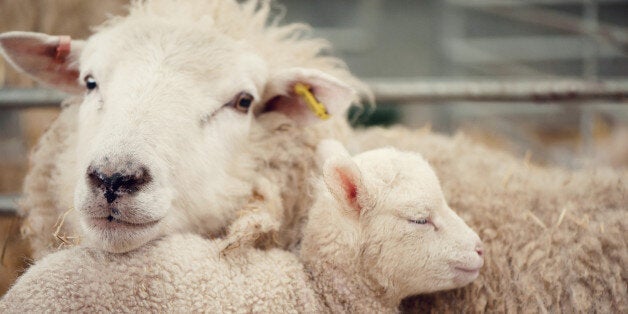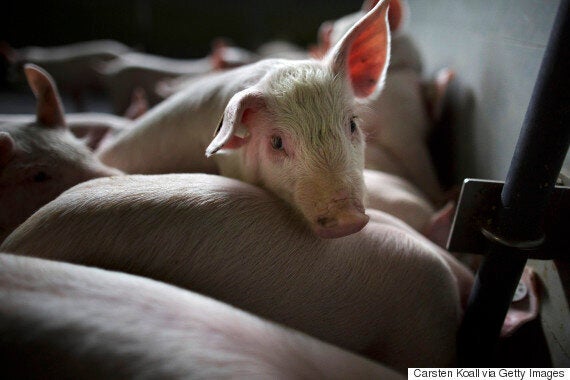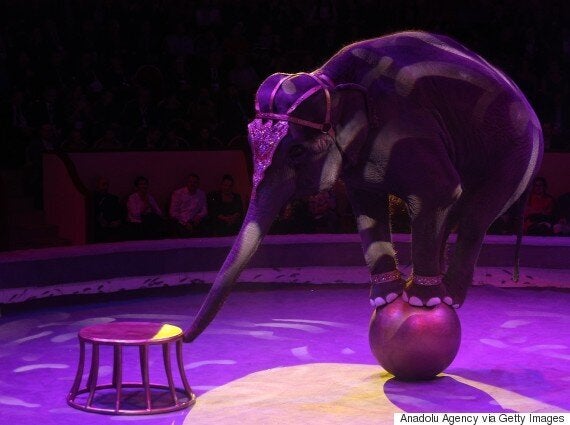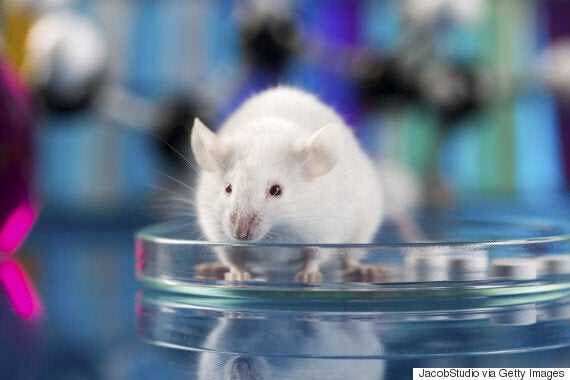
World Animal Day doesn't just mean sharing adorable pictures of puppies, penguins and pandas on social media, although that is a bonus. The purpose of World Animal Day is to improve the lives of animals everywhere.
More specifically, the mission of World Animal Day is:
"To raise the status of animals in order to improve welfare standards around the globe. Building the celebration of World Animal Day unites the animal welfare movement, mobilising it into a global force to make the world a better place for all animals. It's celebrated in different ways in every country, irrespective of nationality, religion, faith or political ideology. Through increased awareness and education we can create a world where animals are always recognised as sentient beings and full regard is always paid to their welfare."
In order to achieve this we need to go further than clicking on a cute picture or funny cat video and question how our lives impact all animals every day. From the meat and dairy products we buy to the wildlife selfies we take, animals are continuously and shamelessly exploited by humans, sometimes without us even realising it.
Farm animals:
Animal Equality estimates that more than 56 billion farm animals are killed every year by humans. This does not include fish and other sea creatures "whose deaths are so great they are only measured in tonnes".
Taking into account marine life, Animals Deserve Absolute Protection Today and Tomorrow (ADAPTT) estimates that 150 billion animals are slaughtered every year. A counter created by ADAPTT gives a real-time picture of the number of animals killed worldwide by the meat, egg and dairy industries. As soon as you open the web page the death toll starts to rise. It's a humbling experience and one that I would urge everyone to try.
Focusing solely on the UK market, it is estimated that about 10 million pigs, 14.5 million sheep and lambs, 2.6 million cattle, 80 million fish and 950 million birds are killed for human consumption.
The numbers are staggering.

Not only are the figures almost impossible to comprehend, but the minimal standards afforded to farm animals are constantly under threat. Earlier this year the British government suggested devolving regulatory powers to the farming industry. They also proposed scrapping animal welfare guidance entirely. It wasn't until the news became public knowledge that they were forced to backtrack on the controversial plans.
The farm industry needs far more regulation. Of 10 slaughterhouses filmed secretly by Animal Aid investigators between 2009 and 2014, nine showed evidence of cruelty and lawbreaking. The Say Yes To Slaughterhouse CCTV campaign, backed by major animal welfare charities, is calling for mandatory CCTV in abattoirs that is monitored by an independent body. Despite more than 160 MPs pledging their support for this campaign animals continue to be slaughtered without sufficient regulation.
Eggs and dairy are also not exempt from cruelty. In order to produce dairy products, thousands of male dairy calves are killed because they are of no use to farmers. The egg industry also facilitates immense suffering. Despite brands labelled 'free range' or 'ethical', male chicks are killed when they are just one day old because they are unable to lay eggs. Methods of killing male chicks vary from country to country. They are either gassed, ground up alive or tossed into bin bags and left to suffocate.

Animals in entertainment:
Animals are used and abused for humans' entertainment worldwide. They are trained to perform unnatural tricks in circuses and theme parks. SeaWorld decided to stop its killer whale breeding programme in March after years of scrutiny, yet it still houses scores of marine life in tiny tanks. Zoos have also been in the limelight this year, with the death of Harambe the gorilla sparking international outrage. The shooting of the endangered ape after a child crawled into his enclosure at Cincinnati Zoo renewed a debate about animals in captivity. Last week a lion was shot dead after escaping from his enclosure at Leipzig Zoo and last month an antelope was shot dead by zoo staff after escaping from Paignton Zoo in Devon. Will Travers, founder and president of the Born Free Foundation, said following Harambe's death that it was time for a long-overdue debate about our relationship with wild animals and the natural world.
Thousands of animals globally continue to be exploited in circuses. They are forced to perform unnatural tricks all in the name of 'entertainment'. In order to train a wild animal they are often taken from their mothers when they are young and forced into submission through a routine of physical domination, pain and fear.
Bloodsports also claim the lives of hundreds of thousands of animals. By its very definition, all those who are killed in bloodsports undergo an excruciating death. Bullfighting still takes place in Spain, Portugal, France, Colombia, Mexico, Venezuela and Peru. Humane Society International estimates that about 250,000 bulls are killed in bullfighting every year.

Animals in laboratories:
Latest statistics released from the Home Office showed there was a 7% increase in the number of animals used in experiments in British laboratories. More than 4.07 million animals were used for the first time during 2015. In 2014, 3.8 million animals were used. The increase made a "mockery" of the government's pledge to replace, reduce and refine the use of animals in scientific research, campaigners said. There are organisations, such as the Dr Hadwen Trust, which fund human-relevant alternatives to vivisection. Lush also recognises scientists striving to beat animal testing, championing those who are replacing the use of animals in research. More needs to be done to replace animals in British laboratories.
Animals in fashion:
Fur farming became illegal in the UK in 2002. Fur as a fashion statement has been on the decline since the 1980s following years of activism from animal rights groups. At this year's London Fashion Week 80% of designers refused to use fur. Designers are increasingly dropping the controversial product, with Armani announcing in March that it was going fur free. While the reduction in numbers is encouraging, there should be absolutely no fur products sold in the UK. If the practice of fur farming is so barbaric that it was banned then it's about time fur products produced in other countries were not imported into the British market.
Fur is just one of the ways animals are used in fashion. Exotic animal skins, such as snake and crocodile, are used as fashion accessories. Similarly to those mammals used in the fur industry, snakes and other reptiles are skinned alive, causing unimaginable suffering.
Immense cruelty has also been documented in the wool, leather and down industries. Undercover footage from People for the Ethical Treatment of Animals (PETA) showed sheep being punched and kicked on wool farms in the US and Australia. Cows have been reported to have been decapitated while still alive in the leather industry and ducks and geese are restrained while their feathers are torn from their skin.
Companion animals:
Puppy farms are often hidden in remote areas, where dogs are held captive in appalling conditions to breed litter after litter. The pups are then sold to buyers who are often unaware of where the dog really came from and his/ her health defects. Many puppies are taken away from their mothers when they are far too young, infected with parasites and with health conditions that can require emergency and expensive veterinary treatment. Up to 400,000 puppies are believed to have been sold to the British public every year. Animal welfare groups and the Kennel Club are working together to combat the cruel and unregulated practice, but there's still a long way to go.
Animals continue to be abused by humans in the farming, fashion and tourist industries, as well as in laboratories, circuses and zoos. By all means celebrate World Animal Day on October 4 but don't forget them every other day of the year. Let's make every day a World Animal Day.
